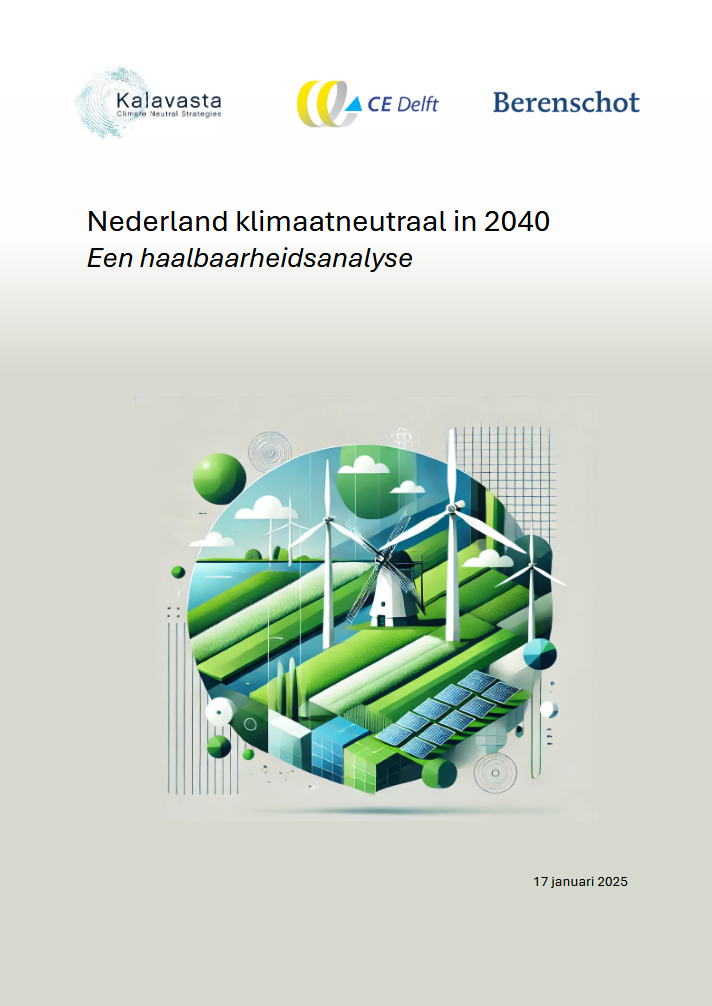The Netherlands climate neutral by 2040


Greenpeace and Natuur & Milieu commissioned Kalavasta, Berenschot and CE Delft to investigate whether the Netherlands could achieve net zero emissions by 2040, which would accelerate the current 2050 target by 10 years. The study aimed to analyze if this acceleration is realistically achievable for the Dutch government, particularly given that the EU is currently considering a 90% emission reduction target for 2040. The analysis took a comprehensive approach by examining the feasibility through different lenses including policy, economics, social factors, environment, technology, infrastructure and spatial planning.
The analysis shows that by 2040, after maximum efforts to accelerate emission reduction, approximately 18.5 Mton of residual emissions would need to be compensated. This represents a 92% reduction compared to 1990 levels. Of these residual emissions, 8.7 Mton are structural emissions that will remain permanently present, mainly methane emissions from agriculture, while 9.8 Mton are temporary emissions that can be further reduced after 2040. The built environment faces the biggest challenges with 6.2 Mton of residual emissions.
To achieve climate neutrality by 2040, the 18.5 Mton of residual emissions must be compensated through negative emissions. Various techniques are available in the Netherlands, including mineralization with olivine (3 Mton), capture at waste incineration (2 Mton), timber construction (2 Mton), and BECCS in biofuel production (4.8 Mton). For the remaining 6.7 Mton, Direct Air Capture (DACCS) is proposed, though this technology is still expensive and energy-intensive. The analysis concludes that while challenging, sufficient negative emission potential exists to achieve net zero by 2040.
Four major cross-sector challenges were identified: additional investments required (24-34 billion euros annually), pressure on the labor market (560,000 extra jobs needed at peak), infrastructure challenges (particularly electricity network), and availability of critical materials. While these challenges are significant, the analysis found no insurmountable barriers to achieving substantial emission reductions by 2040, though reaching net zero would require stringent government policy and major efforts from all stakeholders.
The study emphasizes that achieving climate neutrality by 2040 requires clear, timely, and stringent government policy combining pricing mechanisms and regulations. This includes making fossil fuels more expensive than sustainable alternatives through ETS1 and ETS2, supplemented with national levies. Additionally, stimulating policies are needed to support citizens who cannot afford the transition and businesses that might struggle with international competition during accelerated transformation. The analysis suggests that without rapid development of additional measures, the 2040 target will become unattainable.